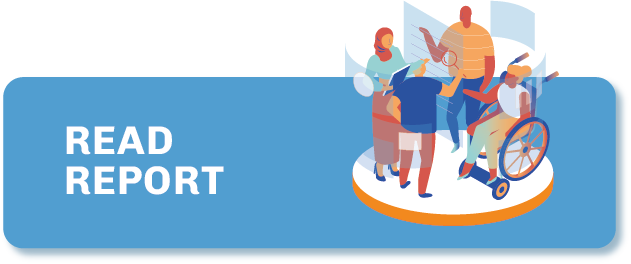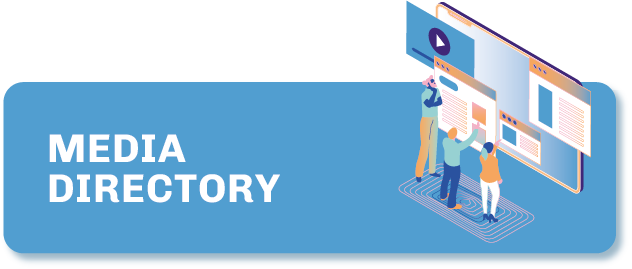Armenia
Radio Yerevan was once asked:
– Is it true that communist Mr Poghosyan found $1000 in the street?
– Yes! Only… not Mr Petrosyan, but Mrs Martirosyan. Not $1000, but $10. Not found, but lost. Not in the street, but in the casino. Not communist, but nationalist. The rest is absolutely true!
This old joke of Soviet-era Yerevan Radio best describes the main challenges facing the Armenian media landscape even now – a high level of disinformation, and political polarisation.
The country has marked progress in its democratic development since 2018, according to the Parliamentary Assembly of the Council of Europe’s resolution on the functioning of democratic institutions in Armenia 2022. However, “as regards the media, Armenia recently faced a series of events, including the Covid-19 pandemic and the Nagorno-Karabakh conflict, which led the authorities to severely restrict the independence of journalists and freedom of expression on a temporary basis,” it adds.
GENERAL INFORMATION
Press
freedom
ranking
Internet
penetration
POPULATION
Media organisations
in the Directory
TYPE OF COVERAGE

TYPE OF ORGANISATION

GENDER OF FOUNDERS

Press freedom
Armenia is currently recovering from the pandemic, but security and territorial integrity issues remain the major concerns in society and the media. The Armenian media market lives and operates under two main umbrellas – self-regulation and legislation. Regarding the former, the Media Ethics Observatory (MEO) was founded by the Yerevan Press Club along with institutional partners and individuals to jointly develop norms of professional ethics. Individuals and organisations may apply to MEO and get judgments or decisions on publications. In addition, these organisations create various professional training and educational opportunities for the entire Armenian media market.
Meanwhile, the Law on Mass Media (2003) and the Law on Audiovisual Media (2020) are the main legal regulators of the media landscape. According to the country’s constitution and the Law on Audiovisual Media, the National Commission of TV and Radio regulates the digital multiplex and broadcasting licensing tenders.
In 2021, this tendering process was disputed in court by some media companies that filed a lawsuit against the decision of this commission.
Market structure and dominance
The Armenian media landscape is much larger than the 28 TV and 34 radio channels which are regulated by the Law on Audiovisual Media. The second most frequently consumed source of information in Armenia is the internet. YouTube and Facebook are the two most popular networks in Armenia, followed by Instagram, according to a 2019 analytical report from the Media Initiatives Center. The migration of traditional media publications to the internet, as well as the launch of digital native media outlets, has dramatically changed the media market and had a valuable impact on freedom of speech.
Legacy media outlets have made huge attempts to reorganise and to keep their positions as sources of information. However, perceptions on the independence of media sources have gradually reached the online media sphere. New technologies and affordable mobile internet tariffs have stimulated citizen journalism and social media development.
This situation has brought new challenges in the combating of fake news and in increasing media literacy levels. Experts and leading media non-governmental organisations (NGOs) in Armenia think that this is a self-regulation subject, and should not be used as a justification for amendments to legislation. Local NGOs such as the Media Initiatives Center, Public Journalism Club and Yerevan Press Club successfully implement media literacy projects both for the media and for targeted groups of society.
How media is funded
Disinformation, fake news and ethical issues are closely connected to the funding of Armenian media outlets, especially regarding the transparency and accountability of revenue. A legislative framework to ensure transparency of media ownership has been in the development stage since 2021. Local NGO FOICA and partners actively advocate on this issue.
The financial and economic stability of the media industry is related to the overall political instability of the country, as well as to the lack of variable sources of revenue for media outlets. Several managers of the media organisations in the Project Oasis directory mention that they are not secure regarding their long-term financial stability. Full political independence for such outlets is provided through grants from international organisations and governments.
Nineteen profiles of digital native media organisations from Armenia are included in the directory. These outlets have established interesting and unique approaches in their coverage of human rights and “taboo” topics such as the army, corruption and transparency. They have also developed new media specialisations including fact-checking, multimedia reporting, investigative reporting, data journalism and so on. Notably, all 19 media organisations have found a marketing and creative niche in the Armenian online media landscape, which is very dynamic and variable.
Some of these 19 media organisations are not in the “premier league” of page views, but they are advanced in creating new media formats of digital storytelling and in keeping a balance between transparent financing and editorial independence.
They also represent a timeline of Armenian digital native media – from Panarmenian.net, an avant-garde of the early internet decade, to newcomer Xirat, which covers only national minority issues in Armenia in the Yazidi language.
“We have to find new business opportunities for survival in the market. Journalism investigation [has become] not only a risky genre, but also a very expensive one. Modern tools and technologies cost money; staff training takes a long time and needs investment in the profession,” says Kristine Barseghyan, manager of the Hetq investigative media outlet.
In general, these 19 digital native media outlets’ financing sources align with those for the entire media market as a whole – services, national and native advertising, monetisation and grants. In particular, longform media projects, fact-checking initiatives and coverage of sensitive topics still depend on grants.
For now, Armenian digital native media outlets bank on every opportunity to keep thematic and authentic uniqueness in the huge flow of mainstream media, and to find a balance between exclusiveness, popularity and audience satisfaction.
Last updated: January 2023
CREDIT FOR STATISTICS: Press Freedom statistics, RSF Press Freedom Index 2022; Internet penetration and population statistics, from Internet World Stats

